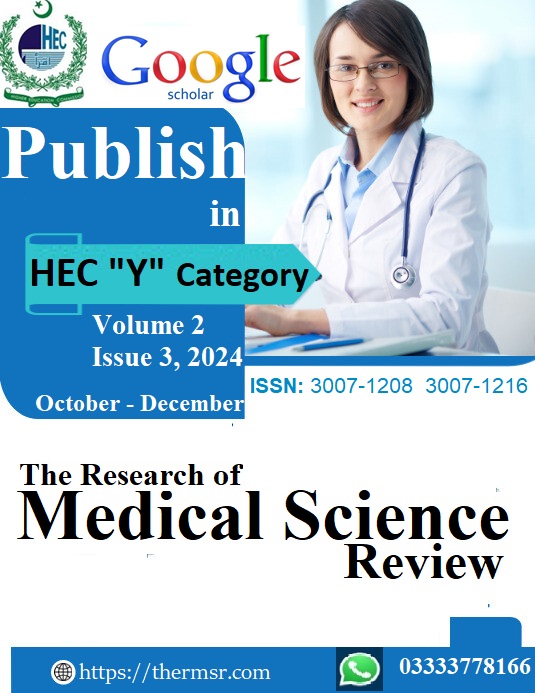FREQUENCY AND ASSOCIATED FACTORS OF ASPIRATION PNEUMONIA AMONG PATIENTS IN THE ICUS OF HAYATABAD MEDICAL COMPLEX, PESHAWAR
Keywords:
Aspiration pneumonia, ICU, risk factors, nasogastric tube, patient positioning, feeding methodsAbstract
Background: Aspiration pneumonia (AP) arises from the inhalation of oropharyngeal or gastric contents into the lungs, leading to significant morbidity and mortality. It predominantly affects ICU patients with comorbid conditions impairing consciousness, swallowing, or lung clearance. This study investigates the frequency and associated factors of AP in the ICUs of a tertiary care hospital in Peshawar, Pakistan.
Objectives: To determine the frequency of aspiration pneumonia among ICU patients, To identify associated risk factors such as patient demographics, feeding methods, and positioning.
Methods: This cross-sectional study included 196 patients admitted to the ICUs of Hayatabad Medical Complex. Data were collected using a structured questionnaire and analyzed using SPSS v22. Descriptive statistics and chi-square tests were applied to identify associations.
Results: The frequency of AP was 16.3%, Risk factors significantly associated with AP included nasogastric tube placement (11%), intermittent feeding (50%), and supine positioning (100%), AP was more common among patients with moderate to severe disabilities (40.6%).
Conclusion: Aspiration pneumonia is a prevalent concern in ICU settings, with identifiable and modifiable risk factors. Preventative strategies such as improved feeding practices, patient positioning, and early disability management are critical to reducing its incidence.
Downloads
Downloads
Published
Issue
Section
License

This work is licensed under a Creative Commons Attribution-NonCommercial-NoDerivatives 4.0 International License.














